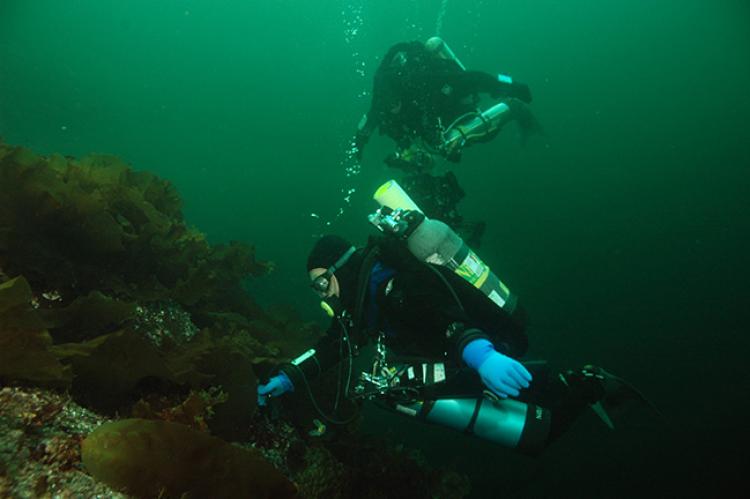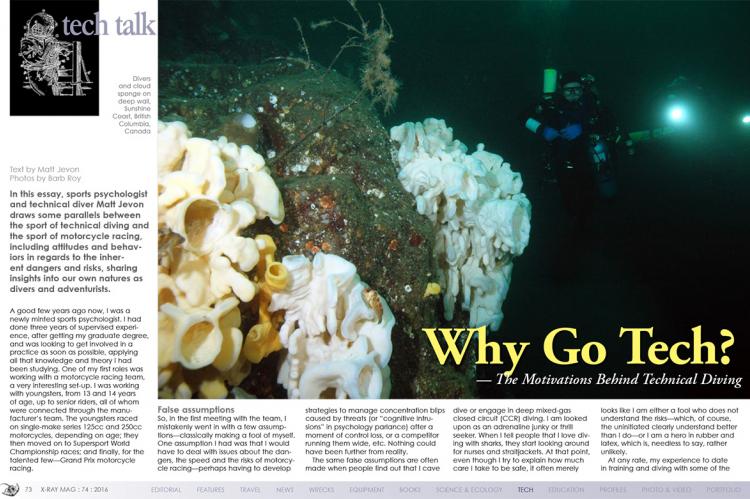Author: matt
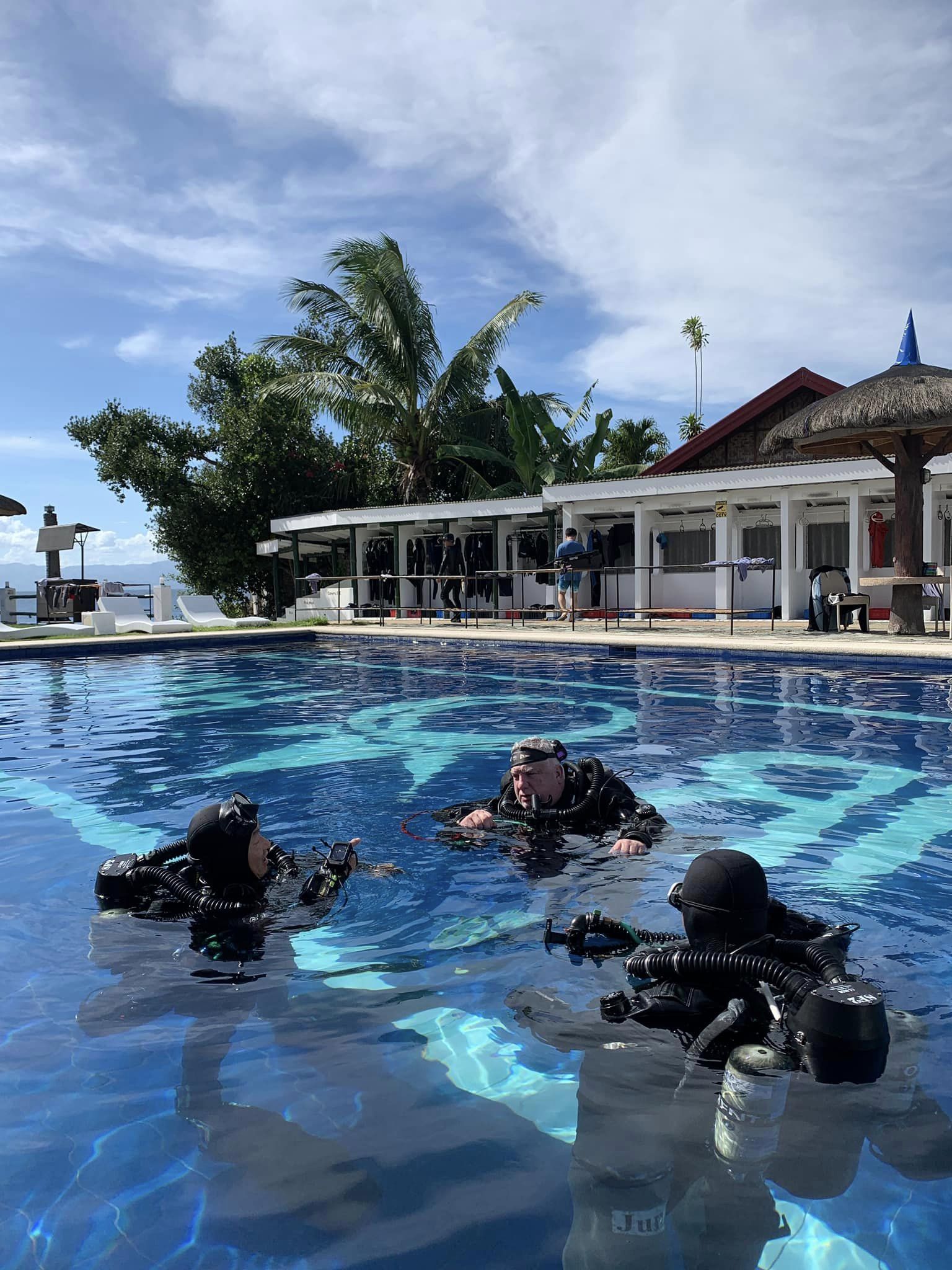
What about Tech?
Thinking about Technical Diving or wonder ing what technical diving techniques might offer your club diving?
ing what technical diving techniques might offer your club diving?
I started technical diving purely to stay longer under water, with absolutely no intentions of going deeper, certainly no intention of going into caves or deep wreck penetration and believing rebreathers were the gateway to certain death. I may have changed my opinion somewhat since then! But is it for you and does tech diving offer anything to the club diver?
There are many definitions of tech diving…. anything involving one or more of deeper than 40m, overhead, planned decompression, multiple gases, multiple cylinders (twinset /sidemounts) and CCR. To my mind though, rather than base tech diving on some arbitrary equipment set-up or depth limits, technical diving is about an attitude of mind. It’s a philosophy and approach to diving 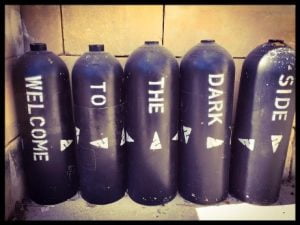 that changes the way the diver approaches every dive from idea, to plan, to execution to debrief. It’s a technically minded approach that may involve gear selection choices, gas choices but always focussed on safely achieving the dive.
that changes the way the diver approaches every dive from idea, to plan, to execution to debrief. It’s a technically minded approach that may involve gear selection choices, gas choices but always focussed on safely achieving the dive.
As a recreational instructor I once had a student who was excellent in the water and aced all the theory, but, I did not like the attitude – tough on me, as long as he met the performance requirements I had to pass him. In technical this is not the case, I can fail someone on attitude alone, even if they are the most skilled diver ever seen. The acid test is would I let them dive with my loved ones. It is for these reasons that I believe attitude defines whether or not you are a technical diver, whether you dive single tank to 20m or CCR to 100m plus in a cave.
The further I progressed through my technical training, the more conservative I became diving on shorter, shallower fun dives. These days I rarely go past 30m on a single tank set-up and start using Helitrox at 35m for a guaranteed clear head. I now love my CCR for deep and cave because it gives me time, almost 6 hours of gas and at least 3 hours of scrubber duration. In the event of any incident I have time, a divers most precious resource, unconstrained by the volume of my open circuit tanks to fix any issue.
I started diving as a bit of an air hog, but my tech training taught me good trim and advanced buoyancy and propulsion. Frog kick, back fin (great fo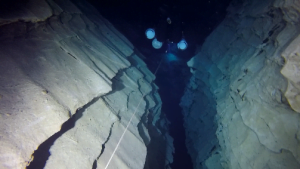 r photographers) and more that meant I became much more efficient in the water, halving my gas consumption, didn’t spoil the view for those behind me and reserved any energy I might need for managing any issues. Good trim also allows for easier blood circulation making the off gassing of nitrogen and any other exotic mixtures much more efficient.
r photographers) and more that meant I became much more efficient in the water, halving my gas consumption, didn’t spoil the view for those behind me and reserved any energy I might need for managing any issues. Good trim also allows for easier blood circulation making the off gassing of nitrogen and any other exotic mixtures much more efficient.
I also got taught that 100 bar and 50 bar were important on every dive, now I know exactly what gas I need to have at each point of the dive and the minimum gas reserve needed as well as the time and pressure points where I should turn the dive. It’s funny but rarely are these numbers 100 or 50!
I got taught about no decompression limits and tables and thought if I went into deco the world would end. Now I know every dive is a deco dive, whatever the depth it’s just that some require more stops than others – every dive gets at least one deco / safety stop!
So – is tech for you
If your ambition is to go deeper just to be deep, then no, tech is not for you. Numbers on a depth gauge prove nothing. If however you want to dive the Empire Heritage off Malin Head in 65m or explore deep into the caves of Cong or Mexico then you have a reason for the depth / training and tech is definitely for you.
If you have a relaxed approach to dive planning and are happy that with 10 years plus diving it will all be grand, then n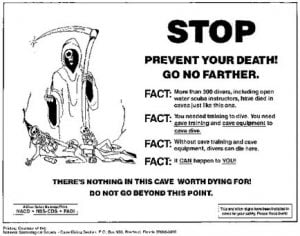 o, tech is not for you. If you know that every dive has risks and that you get satisfaction from properly managing those risks so you can enjoy the dive, then yes, you have the basis of a good tech attitude.
o, tech is not for you. If you know that every dive has risks and that you get satisfaction from properly managing those risks so you can enjoy the dive, then yes, you have the basis of a good tech attitude.
You do not need to be some superhuman either, two of the best tech divers I know are women under 5ft 2” and under 8 stone. They manage sidemounts, CCR’s and multiple stages better than most.
So how to start…
Most agencies offer a discover tech day. While this is usually based on trying out a technical kit set-up, it’s a fantastic chance to spend a day with an experienced technical diver / instructor and find out why they tech dive and the opportunities that exist. Talk to them about Open v Closed Circuit diving and which pathway might suit your needs best. Make sure you have time for a coffee after the day so you can pick their brains.
Talk to other tech divers, ask them what their approach is, why and how they do the dives they do, what got them started and what pathway they took to where they are now. You can cash in on some hard won experience. Use club contacts, join the restarted tech dive forum at http://forum.technicaldiving.ie, call down for a coffee and chat to a tech diving centre.
Pick the right instructor, a thorny subject but we have some tips here https://swt.ie/how-to-choose-your-technical-diving-instructor/. Make sure the instructor will suit you, a good plan is book a coaching day with them, you can save a lot of pain and heartache that way.
If you are already on a tech pathway, think about using different instructors based on their experience and approach. I took a lot of my courses with different people as I wanted to share in a broad range of experience. I have been trained by Mark Powell, Paul Toomer, Phil Sho rt, Tom Steiner and many others and sharing in their experiences have stood me in good stead.
rt, Tom Steiner and many others and sharing in their experiences have stood me in good stead.
On a personal note, I don’t get recreational rebreathers. Regardless of the build and design quality I don’t like a piece of technology that takes the control and therefore the responsibility for monitoring and managing away from the diver. Diving CCR is not as difficult or complicated as some people would have you believe and the confidence a diver has from being fully in control of their own destiny is core to a great diving attitude – technical as well as recreational. Plenty of CCR try dives around for you to find out for yourself.
If you are still interested at this point and if you haven’t fallen out with me over my points above, then you are probably a good candidate for tech. Talk to someone – my door is always open and the coffee is on – bring biscuits!
Matt Jevon, M.Sc. is a Full Open and Closed Circuit Trimix  and Cave Diver. He is also a Technical and mixed gas CCR instructor with TDI. He is the JJ-CCR instructor and dealer for Ireland. He held accreditations as an interdisciplinary sports scientist, sports psychologist with BASES and was a British Olympic Registered Strength and Conditioning Coach. Matt works in high performance business as a board advisor and non-exec, in high performance sport as advisor and coach and is a partner in South West Technical Diving in Ireland. www.swt.ie www.mattjevon.com
and Cave Diver. He is also a Technical and mixed gas CCR instructor with TDI. He is the JJ-CCR instructor and dealer for Ireland. He held accreditations as an interdisciplinary sports scientist, sports psychologist with BASES and was a British Olympic Registered Strength and Conditioning Coach. Matt works in high performance business as a board advisor and non-exec, in high performance sport as advisor and coach and is a partner in South West Technical Diving in Ireland. www.swt.ie www.mattjevon.com

Reaching the heights versus plunging the depths – Parallels in psychological factors in Technical Diving and the Olympics
Achieving the Olympic dream is often described as the culmination of four years or more of hard work, sacrifice, commitment and dedication. To be an Olympian there will be three components that must be in present in each competitor before the dream can be  achieved. Talent, physical potential and psychological potential. Whether someone gets to ‘live the dream’ is entirely dependent on whether they can maximise the three elements. Surprisingly perhaps it’s not the most talented that always succeed. In fact, an abundance of talent can actually work against the potential success as insufficient drive and effort is needed and thereby applied to realise a good level of success. When the last 3% is needed and its drive and commitment that will get them there, the highly talented are often found lacking to make the final step to the top of the tree.
achieved. Talent, physical potential and psychological potential. Whether someone gets to ‘live the dream’ is entirely dependent on whether they can maximise the three elements. Surprisingly perhaps it’s not the most talented that always succeed. In fact, an abundance of talent can actually work against the potential success as insufficient drive and effort is needed and thereby applied to realise a good level of success. When the last 3% is needed and its drive and commitment that will get them there, the highly talented are often found lacking to make the final step to the top of the tree.
The competitors in Rio 2016 that medal will be the rare and unique blend of exactly the right amount of the necessary ingredients, properly prepared. Sports science has added a considerable body of knowledge to the talent identification process and immeasurably to the physical preparation. Where it’s really added value lately though is in understanding the mind of the elite athlete. Unsurprisingly there is no ‘one size fits all’ profile, but certain characteristics are prevalent in all that do achieve Gold.
How can we apply these characteristics to what might be considered ‘elite’ diving? That is cave, wreck and mine exploration, deep mixed gas diving etc. Well, you do need a certain amount of talent that will be developed and shaped by training and meaningful experience to manage the skills and planning that technical diving demands. You will need an appropriate level of physical fitness. Both to manage the gear and to have some spare capacity for managing the physiological reactions to psychological stress. What about the psychological side though, let’s look at each characteristic in turn?
FOUNDATIONS
Motivation. Defined as the direction and intensity of effort, no-one is going anywhere unless they put in a little hard graft. But what will be the drive that gives sufficiently high levels of motivation. An intrinsic sense of self satisfaction of a job well done (task focus) or a  boost to the self-esteem that the goal will bring (Ego focus). For many elite athletes the fear of failure and the resultant damage to the self-esteem or ego is a massive driver. Thereby any and all effort goes into not failing or…. winning. The truth at the elite end is that you will find people high in both. High task and high ego. They may not be arrogant, a term often confused with a high ego, but they will have an unusually high internal motivational focus. Highly externally motivated people tend to lack consistency as the rewards of approbation, recognition and fame vary.
boost to the self-esteem that the goal will bring (Ego focus). For many elite athletes the fear of failure and the resultant damage to the self-esteem or ego is a massive driver. Thereby any and all effort goes into not failing or…. winning. The truth at the elite end is that you will find people high in both. High task and high ego. They may not be arrogant, a term often confused with a high ego, but they will have an unusually high internal motivational focus. Highly externally motivated people tend to lack consistency as the rewards of approbation, recognition and fame vary.
In divers it is the same. Many divers push through the certification levels to gain status in the eyes of their peers and themselves. Then give up…’goal’ achieved although maybe not much more that the highest level piece of plastic their chosen agency can provide. Others are in it for the long haul and it is these consistent high achievers who will share the same motivational traits as the Olympian.
I look upon motivation as a foundation stone. It can be improved and made clearer or consistent, but, you cannot teach someone to be motivated. You can only find out what it is, if anything, that motivates them and help structure their goals and actions accordingly. So ask yourself, do I have these traits, in any area of your life. Is there something in life, career, relationships, sport or otherwise you have felt driven to achieve and have put in the effort and made the sacrifices required. If so, how do you feel about your diving? Does it have the same passion? If not, maybe the motivational foundation stone needs bedding in, or, that’s just not who you are. Let’s be realistic here, we are probably talking about people with the capacity to be in the top 5% in their chosen field of endeavour.
Attitude / Mindset
This for me is the second foundation stone of psychological approaches to elite sport or elite diving. Some people would have you believe it’s all about being positive. Having a winning mentality. I can’t really say in my experience of working with elite athletes that this is the case. Yes, some are amazingly positive people, others, less so, but driven to ‘not lose’ as opposed to win. Welcoming the pain and suffering to prove to themselves, to that little voice inside them, that they can succeed. Winning to this mindset is a relief first and foremost. With both the positive or ‘alternate’ mindsets what is common is a desire to leave no stone unturned, no detail overlooked, no sacrifice too great in the pursuit of success.
Some sports people will relish being part of a team, others, usually in ultra-endurance events, the individuality. As such team working skills, people and communication skills will be highly developed in some, non-existent almost in others. What is important is that the person understands their role and how they relate to the environment and people in which they will train and perform. This is not to say the individual eschews the team, but places first the emphasis on self-reliance. In diving the team mindset is seen as overwhelmingly positive, I tend towards this view, but there are different team dynamics. 3 individuals, operating autonomously, can still be an effective team if they understand the roles and deliverables expected. Maybe only appropriate in more limited, pre-defined circumstances and knowing exactly when not to interfere with others by stepping outside of agreed roles. Ideally diving lends itself to the team approach, increasing situational awareness through teamwork and sharing this through excellent communication skills. The synergy of multiple brains does create a capacity greater than the sum of its parts.
In any event the attitude will be one that keeps the Olympian and diver moving towards their goal, regardless of obstacles and setbacks and even regardless of early high achievement. For example, a golfer can be as distracted by a hole in one as by a nasty slice. Carefully pushing the boundaries out, managing the risks and rewards against each other, keeping a consistent approach are the traits that most often bring success in both environments. Setting off for the 5000m at a full sprint will only end in tears, we see this in divers who progress very quickly only to push too far, too fast and if lucky, escape with a cold hard introduction to reality.
In technical diving mindset and attitude is critical. Unlike recreational diving, most tech agencies allow you to fail a student on a course on the basis of attitude alone, and rightly so. Understanding and acceptance of both one’s responsibilities to oneself and then to others is critical. Depth seekers for the sake of depth need not apply. Ego is not a bad thing though, especially if internal and not reward seeking. All too often confused with arrogance and self-gratification, ego is a major driver for all high performers, without exception. (see previous article on ego). If you work with truly elite athletes, then you appreciate this is what has driven them to the Gold Medal. You can, trust me, have a massive ego and still be a kind and considerate person.
Situational and Self Awareness. I quite often teach a scanning technique based on three circles, close, medium and long range. This is a structured way of checking on oneself and immediate environment in the close circle, on team mates, the medium range environment in the next circle scan and on what is (boat / exit etc.) or might be developing at a longer distance as well. Being able to stay aware in dynamic situations as both your own and your team mates interact with the stimuli and events allows the first chance at responding appropriately to be made. Quickly and accurately recognising stressors and precursors to stressors gives more time for as sessing one’s own coping ability and benchmarking the stressor against previous training and experience. If there is a match, then the stress is positive (Eustress) and it’s likely to be met with confidence and a good solution. If there is a mismatch between the threat posed by the stress and perceived coping ability, then the first link of the error and accident chain is forged. In itself the first event does not have to be significant, but it will then shape future appraisals of the next stressor and badly affect coping perception and decision making. In team sports or versus competitors training and practice competition is designed to provide the stimuli and situations that both embed and test the expectations we have and the comparisons to existing patterns of memory. In this way the ‘experienced’ performer has an edge. They may lack fitness and certain skills, but their ability to predict and use embedded patterns of what is happening to determine the most effective response outweigh any deficiencies in VO2 max. This is undoubtedly true in diving.
sessing one’s own coping ability and benchmarking the stressor against previous training and experience. If there is a match, then the stress is positive (Eustress) and it’s likely to be met with confidence and a good solution. If there is a mismatch between the threat posed by the stress and perceived coping ability, then the first link of the error and accident chain is forged. In itself the first event does not have to be significant, but it will then shape future appraisals of the next stressor and badly affect coping perception and decision making. In team sports or versus competitors training and practice competition is designed to provide the stimuli and situations that both embed and test the expectations we have and the comparisons to existing patterns of memory. In this way the ‘experienced’ performer has an edge. They may lack fitness and certain skills, but their ability to predict and use embedded patterns of what is happening to determine the most effective response outweigh any deficiencies in VO2 max. This is undoubtedly true in diving.
The Building Blocks on the Foundation.
These are not just going to be the mental skills mentioned next, but critically the capacity and ability to execute these mental skills in situations containing multiple stressors, significant valency that is a high relevance and consequence of success or failure. (Death or injury v Fame/Fortune).
These skills include
Imagery – of which visualisation is a part, but imagery includes the richness of all the senses (touch, taste, smell, hearing as well as seeing). It is also likely that imagery is best done for skill acquisition purposes internally, that is you feel the mental rehearsal as a participant, not a spectator, you look out through your own eyes, you don’t watch it on a TV screen. You can see this imagery occurring in Olympians before training and competition, in quiet moments. Perhaps the best examples are white water kayaks where you see them sat on the bank, moving and even paddling the course – moving the whole body as if they were in the boat even though they are on dry land. In diving I’ve noticed a trend to only using visualisation, and then as if you were watching yourself on video. While useful, this is the weakest of the mental rehearsal techniques.
Cue identification and utilisation – applying relevant filters to your situational awareness, embedding appropriate cues or patterns to recognise that stimulate prepared and practiced actions or responses. Dismissing irrelevant cues in favour of what demands attention and what is important. This demands significant and robust embedding of patters – that is a full sensory experience of what will happen around you. Fencers in the Olympics can predict the attacks and defences of their opponent before the move is made, if they couldn’t the move is usually made so fast they would have no effective response. The same is in diving. An experienced instructor will see a student about to make an error or struggle and as such engage in preventative or early interventions that arrest a more serious incident. This is where training, devised to expose the athlete or diver to realistic and relevant cues, coupled with meaningful experience where they are exposed to these cues embeds the useful and genuine patterns. You might be able to do a 30 second shutdown, but if you are waiting for the instructor to signal with wetnotes or a hand signal, you may be too late as you fail to recognise the bubbling behind you.
Pre, In and post-performance routines / scripts. These provide a way of ensuring one is in the optimum cognitive, emotional and behavioural ‘mood’ for the dive. Whether you need to get ‘up for it’ or relax into it, a solid pre performance routine will help. Checklists often provide a reassuring discipline and form part of the routine for some people. The key is always the consistency of the routine, coupled with the discipline with which it is applied. Post dive routines should encompass the debrief and review, solving what went not so well and embedding the good so it becomes more consistent. Spend double the time on analysing what worked and why as opposed to all the time on what didn’t. In dive routines can be very quick, a few milliseconds only, but do help refocus on what is relevant and important. Learn to have key points in the routine so you can step back to a known point and not have to start again from the beginning.
Arousal and Anxiety recognition and management. We have all been told by someone to ‘calm down’ or ‘take a chill pill’ only for that comment to throw petrol on the smouldering bonfire. If we are to get control of our mental and physical arousal, and choose the most appropriate state for the task we face, then we must become sufficiently self-aware to recognise when we are too laid back or conversely over hyped and about to charge through the red mist. The use of pre and in performance routines can help with this, but recognising the triggers is essential so that these routines can be implemented before things get out of control. The most usual and easiest trigger to spot is when you find yourself suppressing an emotion. Emotions have a purpose and to be most effective and least distracting they need to flow – to happen naturally. Love or hate, fear or joy, attempting a blocking of the emotion amps it up. In the Olympics there are a myriad of events that can trigger these responses and not just the obvious pre and in competition. The Olympian is in a foreign country, there is heightened security, searches, long cues to get in and out of controlled spaces, confinement to the Olympic village, temptations of unlimited food and surrounded by equally young, fit people with associated temptations and  distractions. Add in media attention and pressure, a countries expectations, sponsors and officialdom and it’s a miracle anyone copes at all. In diving we often discount many of the related but not directly diving stressors. Travel, lack of sleep, permits, boat rules and restrictions, officialdom, permits etc. I know there’s a tradition of early starts – fine when you have to catch a tide, if you can still manage appropriate physical (sleep / food / hydration) and mental preparation. Not required just to meet some dive centres schedule so they can have an afternoon off or fit in 10 try dives. Don’t dive in a sub optimal physical and mental state.
distractions. Add in media attention and pressure, a countries expectations, sponsors and officialdom and it’s a miracle anyone copes at all. In diving we often discount many of the related but not directly diving stressors. Travel, lack of sleep, permits, boat rules and restrictions, officialdom, permits etc. I know there’s a tradition of early starts – fine when you have to catch a tide, if you can still manage appropriate physical (sleep / food / hydration) and mental preparation. Not required just to meet some dive centres schedule so they can have an afternoon off or fit in 10 try dives. Don’t dive in a sub optimal physical and mental state.
The Top Level or Higher Order Psychological Skills
Managing emotions in and away from training and competition requires a long time to develop and for many, even those that win gold, is often out of reach. The trick is consistency, the more you are able to do this, the more consistent you will be in all of life’s challenges, not only elite sport or diving. Choosing and being able to apply different types and intensities of concentration according to the situation you face is definitely a high level skill. In Biathlon for example the concentration required to ski down a technical slope, versus climb a hard and long section then at the end of either be calm to put shots on target is incredibly varied. The same in diving, avoiding being drawn into a narrowing of concentration due to physical effort or task loading. Being able to switch to calm mode to work out responses to equipment failures or navigation. Other skills such as refocusing, utilising stress to generate positive outcomes, even distress can be built on the foundations. The bigger your effective toolbox, the more likely you will have available and select a good or winning response to challenges.
Finally, whether your outlook is driven by a need to achieve or a need to avoid failure, it is understanding that in life, in training and in competition that you are prepared to go the ‘the dark and scary place’ where what is unknown is the biggest challenge. Where there will be physical, mental and emotional pain and discomfort. It’s a hard place to be, at the limit of physical and mental capacity, but characteristic of consistent high performers is a willingness to go there just about daily. You cannot experience the light until you have faced and beaten the dark.
 Matt Jevon, M.Sc. is a Full Trimix and Cave Diver and Technical and CCR instructor with TDI and IANTD. He is the JJ-CCR instructor and dealer for Ireland. He held accreditations as an interdisciplinary sports scientist, sports psychologist with BASES and was a British Olympic Registered Strength and Conditioning Coach. Matt works in high performance business as a board advisor and non-exec, high performance sport and is a partner in South West Technical Diving in Ireland. www.swt.ie
Matt Jevon, M.Sc. is a Full Trimix and Cave Diver and Technical and CCR instructor with TDI and IANTD. He is the JJ-CCR instructor and dealer for Ireland. He held accreditations as an interdisciplinary sports scientist, sports psychologist with BASES and was a British Olympic Registered Strength and Conditioning Coach. Matt works in high performance business as a board advisor and non-exec, high performance sport and is a partner in South West Technical Diving in Ireland. www.swt.ie
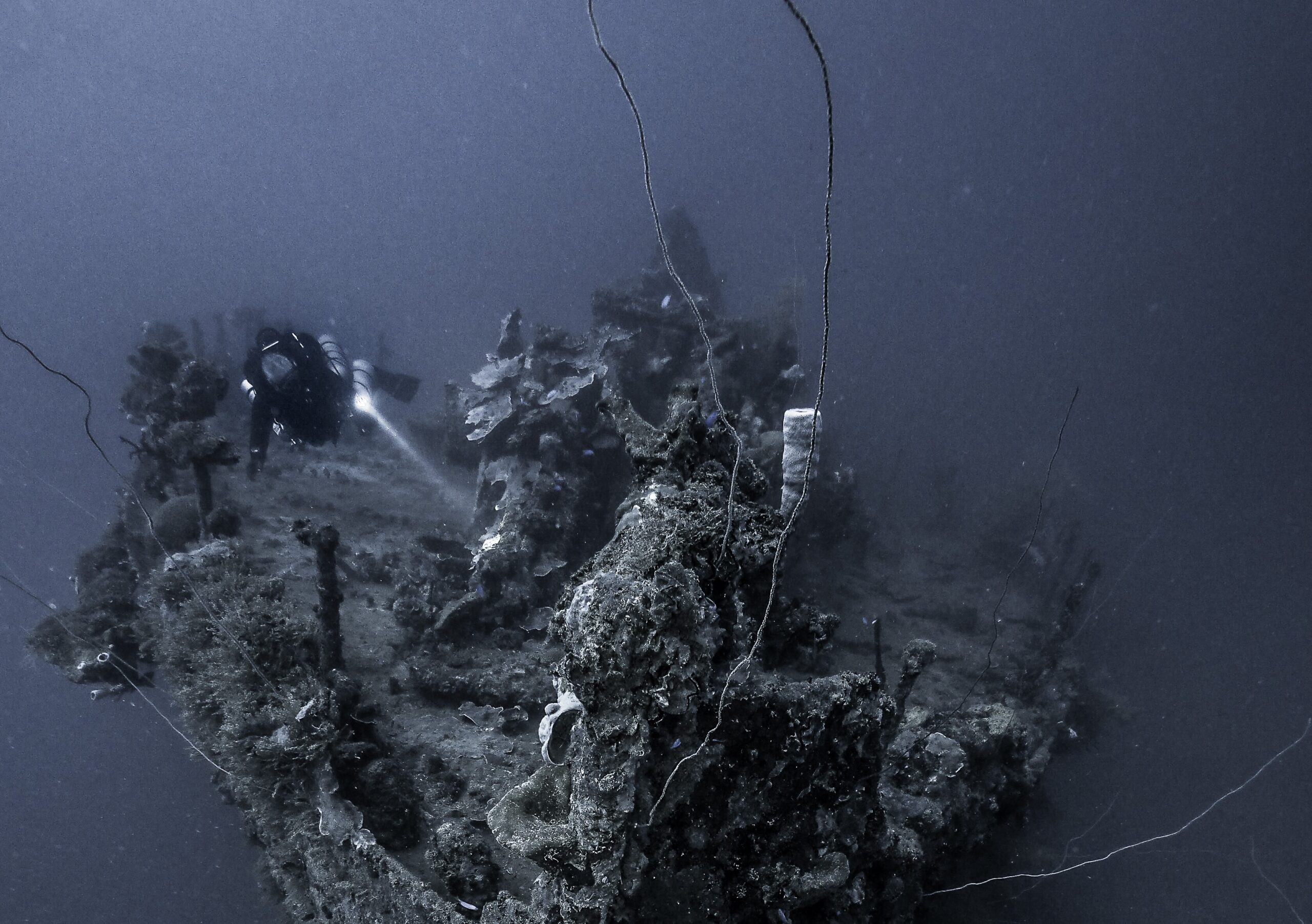
Why go tech? Motivations behind technical diving
In this essay, sports psychologist and technical diver Matt Jevon draws some parallels between the sport of technical diving and the sport of motorcycle racing, including attitudes and behaviors in regards to the inherent dangers and risks, sharing insights into our own nature as divers and adventurists.
False assumptions
In the first meeting with the team, I mistakenly went in with a few assumptions—classically making a fool of myself. One assumption I had was that I would have to deal with issues about the dangers, speed and risks of motorcycle racing—perhaps having to develop strategies to manage concentration blips caused by threats (or “cognitive intrusions”, in psychology parlance) after a moment of control loss, or a competitor running them wide, etc. Nothing could have been further from reality.
The same false assumptions are often made when people find out that I cave dive or engage in deep mixed-gas closed circuit rebreather (CCR) diving. I am looked upon as an adrenaline junkie or thrill-seeker. When I tell people that I love diving with sharks, they start looking around for nurses and straitjackets. At that point, even though I try to explain how much care I take to be safe, it often merely looks like I am either a fool who does not understand the risks—which, of course, the uninitiated clearly understand better than I do—or I am a hero in rubber and latex, which is, needless to say, rather unlikely.
At any rate, my experience to date in training and diving with some of the world’s pre-eminent cave and technical divers has shown me huge parallels with the motorcycle and rally drivers, with whom I have worked. None of them are thrill-seekers. In fact, they are the opposite. This does not mean they ignore or blank out the risks entirely. They coolly and calmly assess the risks, then formulate strategies and responses to deal with these risks. Once satisfied that the risks have been managed, their conscious and subconscious minds are free to focus on the objective—winning. Accomplishing a successful dive mission or winning a race is indeed similar. Interestingly, motorcycle rally as a sport has a great saying: “To finish first, first finish!” The same is true in diving: To have a successful dive, finish alive!
Motivation
So what drives technical and cave divers to set and pursue their goals?
Challenge. Well, for some, it is clearly the challenge of exploring their personal limits. In any field of human endeavour, this is a great driver and motivator. I see these guys as students and for a while as peers, working their way up through the levels until they hit the outer edges of certification programmes. But then, after a couple of years or less, they drop out or fall back. Job done, goal achieved.
Self identity. For others, it’s about the love of what they get to be, the sense of self and identity—the element of both uniqueness and individuality involved in being at the highest level of a sport. In short, it’s about the passion to be different, to be excellent, in a society that all too often seems to pander to the average or worse, the lowest common denominator. So, I can empathise with the drive for excellence; it is a boost to one’s self-esteem to be a little bit different, to be unique, to be part of a small and select group.
Because it’s there. For many, it’s the Everest story: They dive a wreck or a cave “because it’s there”. For some, that feeling of discovering a new wreck, of exploring a virgin cave and laying a new line, can’t be beat. Hardships will be suffered; the edge of acceptable risk will be pushed and sometimes exceeded; but the experience of being the first human to set foot on a ship since it sank over 100 years ago, or to explore a new cave passage or connect a system, will be the reward that pays back again and again.
Achievement. It’s not a question of whether or not the experience rewards or satisfies the ego. For some, it’s all about the task and the process to reach the outcome. Both ego and task work well as positive drivers. A person who is both highly ego-driven and highly task-driven is the most likely to succeed. In fact, these characteristics are key predictors of talent in high performance sport and business as well as in diving.
Beating the odds. There is also a huge satisfaction to be gained in simply beating the odds. For some, this is exultation; for others, relief. It depends on whether or not the major part of your motivational make-up is linked to a need to achieve or avoiding a fear of failure. For me, when I played rugby, winning was a relief, first and foremost—a vindication of the training, the preparation and the hard work. After that, was the celebration. I feel the same coming out of a deep dive or a cave—a complete satisfaction at having managed the odds. I need to review and embed this reaction before I can enjoy the “success” of the dive.
Stressors
Conversely, the things that cause the greatest stresses in motor sports include dealing with sponsors, discomforts of travel and strange hotel rooms, legal and insurance issues, not to mention, family and friends. It’s not too different from diving. That is where the real psychological work is done: making sure that none of these issues interfere with concentrating on the objectives.
Risk-takers and thrill-seekers
So, do people dive for the thrill, for the element of risk? I am certain there are some who do. I have met a few, and not always with big egos either. They just have a need to go beyond their comfort zones in order to feel alive.
Some cultures seem more prone to excessive risk-taking and thrill-seeking than others. The strange thing is this: The thrill-seekers will probably take risks on dives which could be properly managed with the right training, kit and preparation.
I cannot say I have come across these traits in the divers I have met who have truly achieved feats of exploration and are still here to share those experiences with us. These pioneers take a more thorough approach to often much bigger risks, building in safety and maximising performance by knowing how to manage and mitigate those risks.
Whatever the reason you dive, whether it’s because the wreck or cave “is there”, or because you like to be an individual, or because you like to coolly and calculatedly beat the odds—good on you, and dive safe. Stay away from the thrill-seekers. Stay safe, stay focussed. ■
A native of the Republic of Ireland, Matt Jevon, MSc., is an experienced and passionate open and closed circuit 100m trimix diver and full cave diver. Whether using backmount, sidemount or his favourite JJ-CCR rebreather, Jevon believes technical diving is all about being safe, having an awesome dive and enjoying experiences few people share. Jevon holds instructor qualifications from TDI, PADI TECREC and IANTD, and partly owns South West Tech—a TDI dive centre in Ireland. Jevon is also an approved JJ-CCR instructor and dealer. In addition, he is a sports psychologist, senior rugby coach and works in strategy and private equity. For more information, please visit: www.swt.ie and www.mattjevon.com.
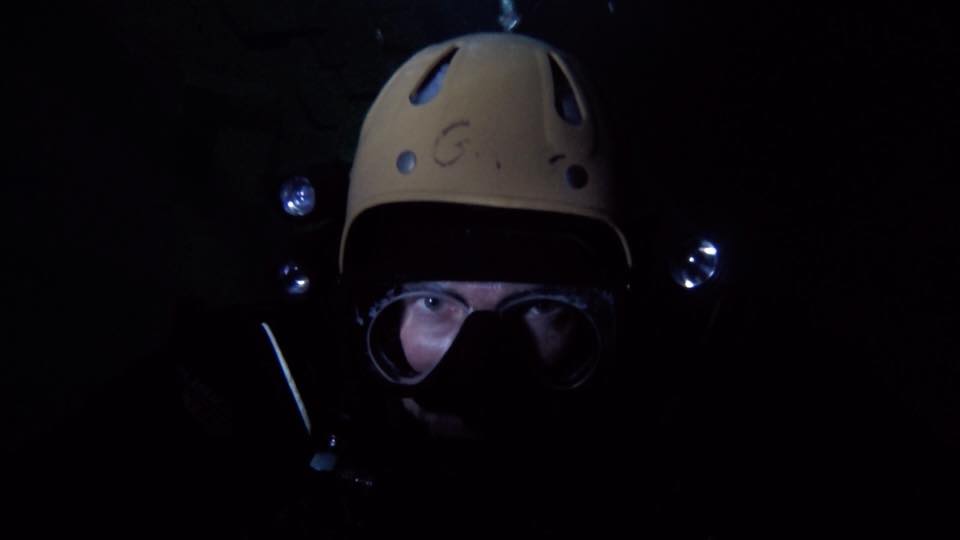
Analysis and Reflection as Learning Tools
Analysis and reflection as learning tools.
The ignoring by celebration of successes and the paralysis paradigm of failure
If you can meet with Triumph and Disaster
And treat those two impostors just the same
Yours is the world and everything that’s in it…..
If – Kipling
In my time I’ve been head coach and assistant coach to pro, semi pro and national league rugby teams as well as the Irish Women’s team. I’ve been a sports psychologist and an advisor on performance and setting performance environments in Rugby, Goof, Motorcycle racing, rally driving and many other professional and Olympic sports. I’m now a technical diving instructor as well. Why the mini CV, well, I’ve seen a few things develop over that time and I want to try and get some balance back.
Technology, especially affordable, go anywhere, tiny camera digital video has made a fantastic difference to the work we can do as coaches, instructors and the development potential for athletes and students.
Skills development wise the quality and immediacy of feedback is astonishing. We can use programmes like Quintic and Dartfish for deeper movement analysis and to illustrate the points we as coaches or instructors want to make. Tactically or technically we can look at cue utilisation, pattern recognition, learning styles etc. It’s pretty incredible. The thing is, even with all these tools, we’re only really doing half a job!
The same is all too often true in analysing other sports I’ve been involved in. When something goes wrong we will spend hours on analysis, working out what the glitch or anomaly was, tackling the error chain, fixing the problem and then, in the training session, change the behaviours or the participants until the problem and failure is eradicated or controlled. But… When we succeed or win, we go celebrate, chalk it up to great preparation, amazing talent, luck… Whatever attribution we want to use, but sure as eggs are eggs, we don’t apply the same effort and detailed analysis to working out what went right, how did we succeed that time, what factors and behaviours should be repeated, practiced until second nature, or were we just lucky this time?
Success is not final
Failure is not fatal
It is the courage to continue that counts
Winston Churchill
The number of non divers or recreational divers I meet who tell me they couldn’t possibly consider deep Rebreather diving or cave diving, both of which I love, is amazing. They tell me I’m brave or sometimes they tell me I’m stupid, who knows, they are both probably right. But, what gives me the courage to do those dives is knowing that I’ve been meticulously trained by the best instructors I could find. That I’ve practiced and rehearsed the skills they imparted to me regularly. That I have analysed and reflected on every dive I have done, good or bad, I even have a custom made logbook with specific space on the page where I can record things about where I need to improve.
So, what do I reflect on? There’s the obvious, dive executed versus plan, but that’s really a success v failure measure. All team back fit and well. Again that’s the key success measure. No, there’s more meaningful things to reflect on. Schon who was a big researcher on reflective practice in coaching suggests we should reflect in action and on action. Kabat-Zinn proposes we would be enhanced as coaches and people by practicing mindfulness. Being aware of our thoughts and emotions here and now, in the present. So, reflection doesn’t start after the dive or the event, it starts in the dive by becoming aware and noting how we feel and are thinking in the dive. Only then can we get greater value on our post dive reflections or analysis. My preference is to use some simple cognitive behavioural techniques to enhance reflections in and on action, but it’s worth exploring others, CB approaches suit my own thinking style well.
Specifically then, reflect on the thoughts, feelings and actions from the moment you started preparing for the dive, until the kit was washed and put away. Be mindful of what triggered these thoughts and feelings. Were there distractions? Breathtaking scenery, amazing cave formations, slight kit issues, discomfort, needing to pee etc. Were there things you did that enhanced your connection to the dive, the sense of being aware and connected and fully in control. How did the behaviours and mood of others around you impact upon you. How was your preparation in the previous 24 hours, sleep, travel, diet, hydration, mental imagery of the dive, planning and review, mission clarity, research on the conditions.
Account for and be honest about luck. If you exceeded the limits of training or experience you were lucky. If you’ve not had the training to understand why, meaningful reflection will be hard. A few weeks ago I was chatting to a very good diver who’d just completed extended range with a 55m dive on air. The dive was done in the company of 4 other very experienced divers including two tech instructors to meet training standards and to provide the diver with the experience. They wanted to do another deep air dive for fun. I asked the usual questions, O2 tox, what about narcosis, especially if there was stress etc, the diver felt these were no issue to them. They wanted to save money on trimix. I asked about gas density issues. I was met with a blank look. Fair enough I suppose, that’s not really on the training agency curriculums until advanced trimix. The thing is, the diver didn’t know what they didn’t know about all the risks of deep air diving and pretty much based the risk assessment on O2 toxicity and narcosis. They might enjoy a long diving career doing deep air dives and saving helium costs for years, blissful in the ignorance. But for me, if they do
50 deep air dives without incident, they will have been very very lucky.
Think not just of the what, but also the how and why. But please, invest as much time in the great dives, where all went perfectly, as in the dives where the whirrly thing got hit by the soft and smelly.
A safe and awesome dive was never achieved in a day. Nor will 5000 dives be any guarantee unless they have been meaningful dives and you have reflected on and learnt from each one. Every dive has something to teach us and the positive lessons are more fun than the negative, more enjoyable to analyse and reflect on, and will reinforce great thoughts, habit and feelings that will make our diving more fun and much safer.
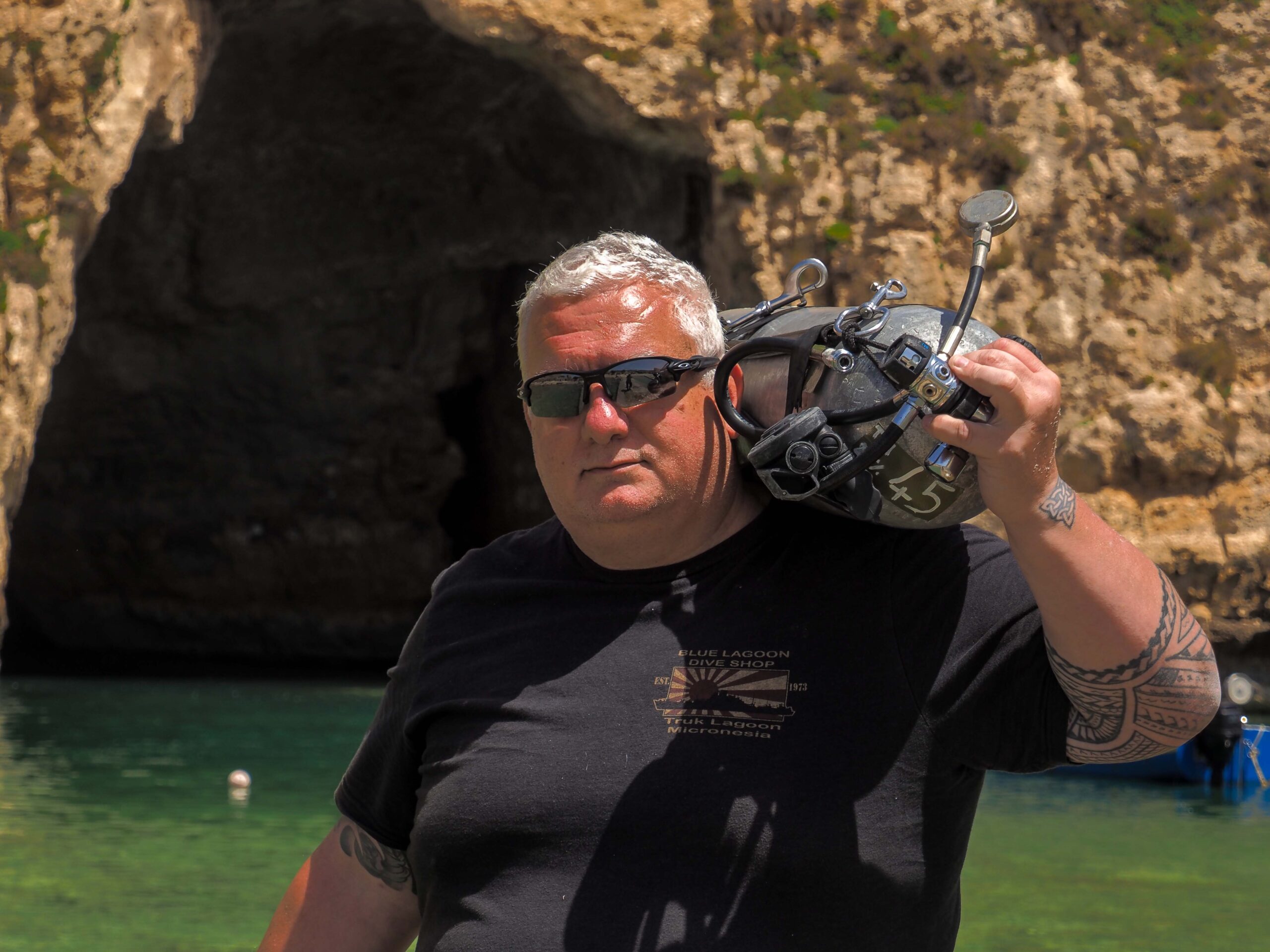
How to choose your technical diving instructor
With thanks and acknowledgement to Rich Walker at Wreck and Cave (www.wreckandcave.co.uk) for the original article, paraphrased here….
Technical Training is not like recreational dive training. Instructors who teach recreationally are excellent at the role and often teach and dive daily. Technical dives are very different, they have greater consequences with errors or kit failures. They are more team focused, they demand higher skill levels and equipment mastery. Any technical dive instructors experience should be in the several 100’s of technical dives before they even think of teaching and they should teach at least one level down from their own top qualification.
Rich Walker suggests a six step guide….
- Do they dive?
Well, yes, of course, but do they dive outside of teaching? Have they real world experience and passion for tech diving they can pass on. As Rich says…
“This experience should form part of the learning process for you as they explain the reasons for conducting skills and practicing procedures using examples from their own real world experience. Ask them what diving community involvement they have. Are they involved in projects, exploration or conservation efforts? What sort of diving excites them? If they are interested in similar things to you, then there’s a good chance that they will have useful stories and anecdotes for you in your class.
If they get evasive about their personal diving, or keep telling you about how busy they are,
run. Run a mile. They’re not diving, and are simply churning out classes. No passion, no current experience, little value to you.”
- How much teaching do they do?
Too much and they are not doing enough diving, too little and they will be rusty teaching your class.
Thanks to Rich again, he says
“I find that teaching 3-4 specific classes a year gives a familiarity and capacity as an instructor to allow a great class to be delivered.
The total number of classes they teach a year is also worth asking. If they are part-time or
“hobby” instructors, then beware. Even a decent part-time instructor should be able to deliver 8-10 classes per year, depending on the duration of the course.
If your prospective instructor teaches infrequently, then run. Run a mile. Rusty, unfamiliar and inefficient instruction is not what you need or deserve.”
- What’s their failure rate?
This is an unusual concept in diving, that you can fail a class, but it can and should happen. Rich puts it very well.
“Nobody wants to fail a class, and I can assure you that no instructor likes failing a student.
However, think about it like this. If it’s impossible to fail a class, then how do you know you’ve really met the required standard. How will you really know if you’re competent to dive in the range you’ve now been certified?
If your instructor has a 100% pass rate, then they are passing everyone.
They are not magical super-talented instructors. They are at best devaluing the class, and at worst placing a weaker diver at risk of harm. If you can’t fail the class, then it has no value.
I have a failure rate of between 5-10%, depending on the class. If your prospective instructor does not fail a percentage of their students, run. Run a mile. No failure rate means you’re just ticking boxes with no attention to quality of your skills, and the knowledge that you need.”
My personal failure rate at the moment is about 8%. It’s not over for all these students and I will work with them to get them over the line. But, if I feel attitude or approach to tech diving is not appropriate, then you could have the dive skills of a Great White and you won’t pass.
- How long have they been diving (not teaching) at this level?
Can’t beat the way Rich puts this
“Here you should be trying to detect the zero-to-hero instructor. It’s all too easy get certified as an instructor in some quarters. It seems like it’s simply an extension of the diver training pathway.
Try to find an instructor that has been diving (see the first point about the difference between diving and teaching) for 2-3 years at that level before they became an instructor. Again, this will mean that they have taken the time to develop their diving skills and knowledge “in the field” rather than simply jumping on the next certification level.
Make sure they can back up the class material with heaps of practical experience.
If they only passed the class you want to take six months ago, and got their instructor certification last week, then run. Run a mile. You deserve better than the zero-to-hero.”
- Are they too cheap?
Straight to Rich again here, can’t find fault with this
“All of my other points above, you’re probably nodding your head and saying, “Yeah, I like the
sound of that. Let’s filter the really good instructors and make sure I get a great course!”. Here’s the kicker, and you will undoubtedly not like it so much. Avoid cheap instructors.
You won’t find out why they’re cheap until it’s too late.
Most decent instructors love what they do, it’s a dream job, no doubt about it. But they will still have rent and mortgage to pay, mouths to feed and diving to do (see point 1). This all costsmoney, and guess where it comes from if they are a full time instructor? Yes, it comes from you, the student. That’s the harsh reality I’m afraid. A rough guide is that you should be paying a minimum of £100 (£150 is more realistic) per day of the course, and this assumes that there are 2-3 students on the course with you. If there’s helium involved, boats, or travel, then expect a higher figure. Also expect that the more in-demand instructors will charge more than this as well.
The price you pay for the class is an important thing to check. If your prospective instructor offers you a knock-down price for the class, then they don’t value their own time. They will also be looking for ways to keep their costs down, and this will mean things like academic sessions done in pubs, quarries when the sea is dive-able, short trimix dives just to hit the standards, and maybe hidden costs too.
If it sounds too cheap to be true – run. Run a mile. You deserve quality training, not bargain
basement corner cutting”.
- Try before you buy
I love Rich’s idea here. For a number of reasons. I suggest booking a 1 to 1 coaching day to find out. Have some goals in mind for that day so that you get value, for example better buoyancy, trim, or being able to back-fin or turn. However the key findings from the day are..
- See if you are going to get on personally and
- See if you are going to enjoy the teaching style, not everyone likes the same things so check
- It will allow you, if the day is properly structured to see if the instructor has something to offer your diving
- It allows the instructor to see exactly where you are in your diving and structure future training accordingly.
- See if the instructor corrects you in the water.
- Were briefs clear and simple, pre brief and debrief
- Did they try and trick you into mistakes, or use pseudo military / macho approaches. This is a poor trait and not found in good instructors, it boosts their self esteem, not your skills.
As Rich says often, if you aren’t happy with all the answers to those questions then
Run, run a mile and find an instructor you deserve.
Here at South West Tech we believe in a great course, for great value, delivered to meet your needs. Our student feedback supports that this is what we are doing. If we fall short ever, you can tell us and we will fix it.
TEC 45 Diver
TEC 45 DIVER
[/box] Course OverviewThe Tec 45 Diver programme the second part of the full tech deep programme. You’ll extend your depth limit to 45 metres and using a single decompression cylinder with twin back or sidemount tanks, use accelerated decompression dives using up to 100% oxygen.
What’s Involved
This course has three knowledge development sessions, three practical application sessions and four open water dives. These will be scheduled to suit divers enrolled in each course, but typically will be run over a long weekend.
Course Skills
Advanced trim and buoyancy, advanced teamwork, gas and decompression planning. Focus on control, attitude and thinking like a technical diver.
Why Do the Course?
This course will appeal to experienced divers who are now seeking to move deeper into technical diving. It develops and prepares you for the PADI tec 50 course, the extended range of the technical diving world and to move into wreck or advanced wreck training programmes.
What’s Included
The course fee covers instructional time, manual, use of facilities including pool. Students are expected to pay any boat costs and accomodation costs required to complete the course but we do have packages available. Only after the successful completion of the course do you pay your certification fee – “you pay for training – you earn the certification”
What You Need
Standard scuba equipment plus a spare mask, timing device, a dsmb, a spool/reel with 30m of line. We also strongly advise that this course is conducted using manifolded twin cylinders or in sidemount configuration. These may be rented for the duration of the course.
[button link=”https://swt.ie/padi-tec-rec-courses/” type=”small”] Back to Main Menue[/button]
[/et_pb_text][et_pb_cta admin_label=”Call To Action” title=”I WANT TO DO THIS” button_url=”https://swt.ie/book-now/” url_new_window=”on” button_text=”BOOK NOW” use_background_color=”on” background_color=”#1e73be” background_layout=”dark” text_orientation=”center” header_font_size=”26″ body_font_size=”14″ use_border_color=”off” border_color=”#ffffff” border_style=”solid” custom_button=”off” button_text_size=”20″ button_border_width=”2″ button_border_radius=”3″ button_letter_spacing=”0″ button_use_icon=”default” button_icon_placement=”right” button_on_hover=”on” button_border_radius_hover=”3″ button_letter_spacing_hover=”0″]
[/et_pb_cta][/et_pb_column][et_pb_column type=”1_3″][et_pb_image admin_label=”Image” src=”https://swt.ie/wp-content/uploads/2015/12/logo_home.png” show_in_lightbox=”off” url_new_window=”off” animation=”left” sticky=”off” align=”left” force_fullwidth=”off” always_center_on_mobile=”on” use_border_color=”off” border_color=”#ffffff” border_style=”solid”]
[/et_pb_image][et_pb_text admin_label=”Text” background_layout=”light” text_orientation=”left” text_font_size=”14″ use_border_color=”off” border_color=”#ffffff” border_style=”solid”]
Prerequisites
Tec 40 diver or equivalent.
Rescue Diver
At least 50 logged dives, 12 on EANx beyon 18m and 10 deeper than 30m.
18 years old and current medical statement signed by a physician
Student to Instructor Ratio
3:1 (maximum)
No. Sessions
3 theory sessions; 3 practical sessions, 4 open water dives
Equipment
On joining we will send you a kit list, full kit can be rented for the course
Related Courses
JJ-CCR Rebreather
PADI Wreck, Advanced Wreck
TEC 40 & TEC 50
Foundations of Safer Diving
[/et_pb_text][et_pb_testimonial admin_label=”Testimonial” author=”Kirk K, Kerry” job_title=”Rec Diver” url_new_window=”off” quote_icon=”on” use_background_color=”on” background_color=”#f5f5f5″ background_layout=”light” text_orientation=”left” portrait_border_radius=”90″ portrait_width=”90″ portrait_height=”90″ body_font_size=”14″ use_border_color=”off” border_color=”#ffffff” border_style=”solid”]
I’ve been diving for over 20 years, including instructing and Matt was able to bring my diving skills and knowledge to a completely new level
[/et_pb_testimonial][et_pb_social_media_follow admin_label=”Social Media Follow” link_shape=”rounded_rectangle” background_layout=”light” url_new_window=”on” follow_button=”on”] [et_pb_social_media_follow_network social_network=”facebook” url=”https://www.facebook.com/Southwestech/” skype_action=”call” bg_color=”#3b5998″] facebook [/et_pb_social_media_follow_network] [/et_pb_social_media_follow][et_pb_image admin_label=”Image” src=”http://swt.ie/wp-content/uploads/2016/01/tecrec2.jpg” show_in_lightbox=”off” url=”https://www.padi.com/scuba-diving/padi-courses/course-catalog/technical-diving-courses/” url_new_window=”off” animation=”left” sticky=”off” align=”left” force_fullwidth=”off” always_center_on_mobile=”on” use_border_color=”off” border_color=”#ffffff” border_style=”solid”] [/et_pb_image][/et_pb_column][/et_pb_row][/et_pb_section]
MOD 1+ – Air Diluent Decompression Diver
MOD 1+ – Air Diluent Decompression Diver
[/box] Courses OverviewMOD 1+ – Air Diluent Decompression Diver – if you already have some technical diving experience, or have completed MOD 1 you can take the next step, becoming qualified to dive to 45m using air as a diluent and with the knowledge and ability to make decompression stops.
What’s Involved
Initial training (MOD 1 and MOD 1+) involves a minimum of 500 minutes in water time, usually over a minimum of five days. Crossovers are a minimum of two days. To gain certification you have to satisfy the skills performance and theory requirements of the course, successfully complete an exam and own / have unlimited access to a JJ-CCR.
Course Skills
Please get in touch for specifics.
Why Do the Course?
This course will start you on the road to silent, bubble free diving. You will significantly extend your time in the water, with or without decompression and enjoy gas reserves, warm moist air to breathe and have a platform on which to build future dives into wreck, cave and exploration. For photographers and wildlife fans you will experience interactions you cannot enjoy on open circuit as our underwater friends don’t like the bubbles. I’ve literally had fish swim up to my mask!
What’s Included
The course fee covers instructional time, manual, use of facilities including pool. Students are expected to pay any boat costs and accomodation costs required to complete the course but we do have packages available. Only after the successful completion of the course do you pay your certification fee – “you pay for training – you earn the certification”
What You Need
Standard scuba equipment plus a spare mask, timing device, a dsmb, a spool/reel with 30m of line. 7 or 11 litre aluminium cylinder with first and second stage plus spg for bailout. Equipment including the CCR may be rented for the duration of the course, but certification cannot be granted until ownership of the CCR. If ownership does not occur within 3 months a skills refresher will be required.
[button link=”https://swt.ie/rebreather-courses/” type=”small”] Back to Main Menue[/button] [/et_pb_text][et_pb_cta admin_label=”Call To Action” title=”I WANT TO DO THIS” button_url=”https://swt.ie/book-now/” url_new_window=”on” button_text=”BOOK NOW” use_background_color=”on” background_color=”#1e73be” background_layout=”dark” text_orientation=”center” header_font_size=”26″ body_font_size=”14″ use_border_color=”off” border_color=”#ffffff” border_style=”solid” custom_button=”off” button_text_size=”20″ button_border_width=”2″ button_border_radius=”3″ button_letter_spacing=”0″ button_use_icon=”default” button_icon_placement=”right” button_on_hover=”on” button_border_radius_hover=”3″ button_letter_spacing_hover=”0″] [/et_pb_cta][et_pb_image admin_label=”Image” src=”http://swt.ie/wp-content/uploads/2016/01/Generic-CCR-21.jpg” title_text=”Start your Elerning with South West Tech Diving our tdi facility number is 1004126″ show_in_lightbox=”off” url=”https://www.tdisdi.com/elearning-courses/generic-ccr/” url_new_window=”on” use_overlay=”off” animation=”left” sticky=”off” align=”left” force_fullwidth=”off” always_center_on_mobile=”on” use_border_color=”off” border_color=”#ffffff” border_style=”solid” /][/et_pb_column][et_pb_column type=”1_3″][et_pb_image admin_label=”Image” src=”https://swt.ie/wp-content/uploads/2015/12/logo_home.png” show_in_lightbox=”off” url_new_window=”off” animation=”left” sticky=”off” align=”left” force_fullwidth=”off” always_center_on_mobile=”on” use_border_color=”off” border_color=”#ffffff” border_style=”solid”] [/et_pb_image][et_pb_text admin_label=”Text” background_layout=”light” text_orientation=”left” text_font_size=”14″ use_border_color=”off” border_color=”#ffffff” border_style=”solid”]
Prerequisites
PADI AOW or equivalent, PADI Nitrox or equivalent, PADI Deep or equivalent, 30 dives inc 10 to 30m and 10 on EANx.
Student to Instructor Ratio
3:1 (maximum)
No. Sessions
2 theory sessions; 1 pool session; 3 open water dives
Equipment
On joining we will send you a kit list, full kit can be rented for the course
Related Courses
PADI Wreck
TEC 45 & TEC 50
Foundations of Safer Diving
[/et_pb_text][et_pb_testimonial admin_label=”Testimonial” author=”Kirk K, Kerry” job_title=”Rec Diver” url_new_window=”off” quote_icon=”on” use_background_color=”on” background_color=”#f5f5f5″ background_layout=”light” text_orientation=”left” portrait_border_radius=”90″ portrait_width=”90″ portrait_height=”90″ body_font_size=”14″ use_border_color=”off” border_color=”#ffffff” border_style=”solid”]
I’ve been diving for over 20 years, including instructing and Matt was able to bring my diving skills and knowledge to a completely new level
[/et_pb_testimonial][et_pb_social_media_follow admin_label=”Social Media Follow” link_shape=”rounded_rectangle” background_layout=”light” url_new_window=”on” follow_button=”on”] [et_pb_social_media_follow_network social_network=”facebook” url=”https://www.facebook.com/Southwestech/” skype_action=”call” bg_color=”#3b5998″] facebook [/et_pb_social_media_follow_network] [/et_pb_social_media_follow][et_pb_image admin_label=”Image” src=”http://swt.ie/wp-content/uploads/2015/12/jj-ccr_top_logo.png” show_in_lightbox=”off” url=”https://www.padi.com/scuba-diving/padi-courses/course-catalog/technical-diving-courses/” url_new_window=”off” animation=”left” sticky=”off” align=”left” force_fullwidth=”off” always_center_on_mobile=”on” use_border_color=”off” border_color=”#ffffff” border_style=”solid”] [/et_pb_image][/et_pb_column][/et_pb_row][/et_pb_section]
Tec 50 Diver
TEC 50 DIVER
[/box] Course OverviewThe Tec 50 Diver programme is the final part of the full tech deep programme. You’ll demonstrate you know how to plan, execute and safely carry our extended accelerated decompression dives to a maximum of 50 metres using two decompression gases plus your back gas. This opens the door to mixed gas diving at the next level.
What’s Involved
This course has two knowledge development sessions, three practical application sessions and four open water dives. These will be scheduled to suit divers enrolled in each course, but typically will be run over a long weekend.
Course Skills
Advanced teamwork, focus on managing failures and emergencies, advanced gas and decompression planning. Emphasis on control, attitude, behaving and thinking like a technical diver.
Why Do the Course?
This course will appeal to experienced technical divers who are now seeking to explore the limits of extended range, air decompression diving. It develops and prepares you for the PADI Tec 65 trimix and full trimix courses and gives you a platform to explore advanced wreck, techncial rescue and safety diver training programmes.
What’s Included
The course fee covers instructional time, manual, use of facilities including pool. Students are expected to pay any boat costs and accomodation costs required to complete the course but we do have packages available. Only after the successful completion of the course do you pay your certification fee – “you pay for training – you earn the certification”
What You Need
Standard scuba equipment plus a spare mask, timing device, a dsmb, a spool/reel with 30m of line. We also strongly advise that this course is conducted using manifolded twin cylinders or in sidemount configuration. These may be rented for the duration of the course.
[button link=”https://swt.ie/padi-tec-rec-courses/” type=”small”] Back to Main Menue[/button]
[/et_pb_text][et_pb_cta admin_label=”Call To Action” title=”I WANT TO DO THIS” button_url=”https://swt.ie/book-now/” url_new_window=”on” button_text=”BOOK NOW” use_background_color=”on” background_color=”#1e73be” background_layout=”dark” text_orientation=”center” header_font_size=”26″ body_font_size=”14″ use_border_color=”off” border_color=”#ffffff” border_style=”solid” custom_button=”off” button_text_size=”20″ button_border_width=”2″ button_border_radius=”3″ button_letter_spacing=”0″ button_use_icon=”default” button_icon_placement=”right” button_on_hover=”on” button_border_radius_hover=”3″ button_letter_spacing_hover=”0″]
[/et_pb_cta][/et_pb_column][et_pb_column type=”1_3″][et_pb_image admin_label=”Image” src=”https://swt.ie/wp-content/uploads/2015/12/logo_home.png” show_in_lightbox=”off” url_new_window=”off” animation=”left” sticky=”off” align=”left” force_fullwidth=”off” always_center_on_mobile=”on” use_border_color=”off” border_color=”#ffffff” border_style=”solid”]
[/et_pb_image][et_pb_text admin_label=”Text” background_layout=”light” text_orientation=”left” text_font_size=”14″ use_border_color=”off” border_color=”#ffffff” border_style=”solid”]
Prerequisites
Tec 45 diver or equivalent.
At least 100 logged dives, 20 on EANx beyon 18m and 15 deeper than 30m.
18 years old and current medical statement signed by a physician
Student to Instructor Ratio
3:1 (maximum)
No. Sessions
2 theory sessions; 3 practical sessions, 4 open water dives
Equipment
On joining we will send you a kit list, full kit can be rented for the course
Related Courses
JJ-CCR Rebreather Course
PADI Wreck, Advanced Wreck
TEC Trimix
Technical Rescue / Safety Diver Course
Foundations of Safer Diving
[/et_pb_text][et_pb_testimonial admin_label=”Testimonial” author=”Kirk K, Kerry” job_title=”Rec Diver” url_new_window=”off” quote_icon=”on” use_background_color=”on” background_color=”#f5f5f5″ background_layout=”light” text_orientation=”left” portrait_border_radius=”90″ portrait_width=”90″ portrait_height=”90″ body_font_size=”14″ use_border_color=”off” border_color=”#ffffff” border_style=”solid”]
I’ve been diving for over 20 years, including instructing and Matt was able to bring my diving skills and knowledge to a completely new level
[/et_pb_testimonial][et_pb_social_media_follow admin_label=”Social Media Follow” link_shape=”rounded_rectangle” background_layout=”light” url_new_window=”on” follow_button=”on”] [et_pb_social_media_follow_network social_network=”facebook” url=”https://www.facebook.com/Southwestech/” skype_action=”call” bg_color=”#3b5998″] facebook [/et_pb_social_media_follow_network] [/et_pb_social_media_follow][et_pb_image admin_label=”Image” src=”http://swt.ie/wp-content/uploads/2016/01/tecrec2.jpg” show_in_lightbox=”off” url=”https://www.padi.com/scuba-diving/padi-courses/course-catalog/technical-diving-courses/” url_new_window=”off” animation=”left” sticky=”off” align=”left” force_fullwidth=”off” always_center_on_mobile=”on” use_border_color=”off” border_color=”#ffffff” border_style=”solid”] [/et_pb_image][/et_pb_column][/et_pb_row][/et_pb_section]
TDI Advanced Nitrox
TDI Advanced Nitrox
[/box] Course OverviewOver two days you will lean about using nitrox mixes from 22% to 100% covering in more detail and developing on from your basic nitrox theory. The course is an ideal first step for preparing to move forward in technical diving, cave and advanced wreck. Or simply to add to your recreational diving options.
What’s Involved
There will be 4 nitrox dives with a minimum of 100 minutes of bottom time. You will build on diving skills to date. You will learn about nitrox blending, best mixes, managing oxygen exposure and gas consumption calculations.
Course Skills
Efficient and safe utilisation of nitrox mixes up to 100%. Buoyancy and trim, propulsion techniques, cylinder and stage set-up and rigging, gas management, thinking like a technical diver.
Why Do the Course?
This course will appeal to experienced recreational divers who are now seeking to move into the technical diving world or to add options to their longer or deeper recreational dives. It prepares you to take further technical training such as decompression procedures or tec 40/45/50 courses. Options to combine this course with decompression procedures are available.
What’s Included
The course fee covers instructional time, manual, use of facilities including pool. Students are expected to pay any boat costs and accomodation costs required to complete the course but we do have packages available. Only after the successful completion of the course do you pay your certification fee – “you pay for training – you earn the certification”
What You Need
Standard scuba equipment plus a spare mask, timing device, a dsmb, a spool/reel with 30m of line. A backmount twinset or sidemount BCD, we recommend Apeks, Razor and X-Deep systems. These may be rented for the duration of the course.
[button link=”https://swt.ie/tdi-courses/” type=”small”] Back to Main Menue[/button] [/et_pb_text][et_pb_cta admin_label=”Call To Action” title=”I WANT TO DO THIS” button_url=”https://swt.ie/book-now/” url_new_window=”on” button_text=”BOOK NOW” use_background_color=”on” background_color=”#1e73be” background_layout=”dark” text_orientation=”center” header_font_size=”26″ body_font_size=”14″ use_border_color=”off” border_color=”#ffffff” border_style=”solid” custom_button=”off” button_text_size=”20″ button_border_width=”2″ button_border_radius=”3″ button_letter_spacing=”0″ button_use_icon=”default” button_icon_placement=”right” button_on_hover=”on” button_border_radius_hover=”3″ button_letter_spacing_hover=”0″] [/et_pb_cta][et_pb_image admin_label=”Image” src=”http://swt.ie/wp-content/uploads/2016/01/Advanced-Nitrox2.jpg” title_text=”Start your Elerning with South West Tech Diving our tdi facility number is 1004126″ show_in_lightbox=”off” url=”https://www.tdisdi.com/elearning-courses/advanced-nitrox-diver/” url_new_window=”on” use_overlay=”off” animation=”left” sticky=”off” align=”left” force_fullwidth=”off” always_center_on_mobile=”on” use_border_color=”off” border_color=”#ffffff” border_style=”solid” /][/et_pb_column][et_pb_column type=”1_3″][et_pb_image admin_label=”Image” src=”https://swt.ie/wp-content/uploads/2015/12/logo_home.png” show_in_lightbox=”off” url_new_window=”off” animation=”left” sticky=”off” align=”left” force_fullwidth=”off” always_center_on_mobile=”on” use_border_color=”off” border_color=”#ffffff” border_style=”solid”] [/et_pb_image][et_pb_text admin_label=”Text” background_layout=”light” text_orientation=”left” text_font_size=”14″ use_border_color=”off” border_color=”#ffffff” border_style=”solid”]
Prerequisites
Nitrox diver or equivalent, minimum of 25 dives, 15 years old
Student to Instructor Ratio
3:1 (maximum)
No. Sessions
3 x theory; practical kit setup session; 4 x open water dives
Equipment
On joining we will send you a kit list, full kit can be rented for the course
Related Courses
Wreck
Decompression Procedures
Extended Range
TEC 40, 45 & 50
Foundations of Safer Diving
[/et_pb_text][et_pb_testimonial admin_label=”Testimonial” author=”Kirk K, Kerry” job_title=”Rec Diver” url_new_window=”off” quote_icon=”on” use_background_color=”on” background_color=”#f5f5f5″ background_layout=”light” text_orientation=”left” portrait_border_radius=”90″ portrait_width=”90″ portrait_height=”90″ body_font_size=”14″ use_border_color=”off” border_color=”#ffffff” border_style=”solid”]
I’ve been diving for over 20 years, including instructing and Matt was able to bring my diving skills and knowledge to a completely new level
[/et_pb_testimonial][et_pb_social_media_follow admin_label=”Social Media Follow” link_shape=”rounded_rectangle” background_layout=”light” url_new_window=”on” follow_button=”on”] [et_pb_social_media_follow_network social_network=”facebook” url=”https://www.facebook.com/Southwestech/” skype_action=”call” bg_color=”#3b5998″] facebook [/et_pb_social_media_follow_network] [/et_pb_social_media_follow][et_pb_image admin_label=”Image” src=”http://swt.ie/wp-content/uploads/2015/12/TDI_Sheild_Logo_only_CMYK.jpg” show_in_lightbox=”off” url_new_window=”off” animation=”left” sticky=”off” align=”left” force_fullwidth=”off” always_center_on_mobile=”on” use_border_color=”off” border_color=”#ffffff” border_style=”solid”] [/et_pb_image][/et_pb_column][/et_pb_row][/et_pb_section]
